Even a bad day is a good day in the cult of fly-fishing

- Share via
Editor’s note: The Wild is all about featuring a variety of exciting voices from Southern California’s outdoors scene. For the next several weeks, we’re featuring guest writers (whom we’ve dubbed “wilders” ) from around The Times who are eager to share their adventures with you. This week’s guest wilder is The Times’ tour guide and historian Darrell Kunitomi, a company veteran of 45 years of service. He remembers typewriters, manual ones. His most recent piece for the paper was about his uncle who wrote letters from a Santa Anita horse stall during WW ll.
It’s been a lifetime fishing journey from the concrete banks of old Echo Park Lake. I’ve fished the snowmelt waters of the sacred mountain in Japan, Fujiyama, and caught the yamame trout, whose subtle colors are muted, like an ancient silk screen. I’ve fished in the middle of merry olde England at the Peacock Hotel’s private beats where I “rented the water,” and caught wild rainbow trout and graylings. America’s western states offer fantastic fly-fishing, and I’ve happily fished through the rocky, rollicking waters from Montana to New Mexico.

I’ve been to the storied waters of the East, to dark rivers like the Willowemoc where the American sport was born. I had a solitary session on the brushy Red Kill in the Catskills where I fished during a theater retreat. A strong brown trout inhaled my Woolly Bugger there, and dogged me deep before surrendering. In the gathering dusk I walked back to dinner with my New York friends in the farmhouse.
Get The Wild newsletter.
The essential weekly guide to enjoying the outdoors in Southern California. Insider tips on the best of our beaches, trails, parks, deserts, forests and mountains.
You may occasionally receive promotional content from the Los Angeles Times.
But good old Echo Park is my home water. I was the patient boy on the bank with a cane pole and bobber almost every Saturday morning when fishing was limited to 9 a.m. to noon. Those were adventuresome yet safe days in postwar Los Angeles. All alone I’d ride the 42 bus east on Temple Street.
I learned a lot about fishing at Echo Park Lake — how the green sunfish with their crazy neon gill plates hid in sunken trash cans. They’d attack anything dropped in front of their lair. How the bluegills pricked your hand with their dorsal spines unless you slid them carefully into your hand. And how they could inhale even larger hooks, so I went to a barbless, light wire, long-shanked Aberdeen hook from Mustad I found at Fedco on La Cienega Boulevard, where they had a great tackle department, and those hooks proved perfect for bluegills at the lake.

There was an occasional largemouth bass (there are a lot more of them in there today). And there were schools of easily fooled crappie. From Outdoor Life magazine I learned that they schooled and were called “papermouths.” And I recognized their fragile mouth structure when I caught them.
The church bell rang exactly at noon at St. Athanasius across the street. The sound echoed beautifully around the lake. The bell tolled for me, the young angler, and obediently my pals and I wrapped it up, the fishing was over. Halcyon days in the City of the Angels, back when rush hour was an hour, just before the four mop-headed lads exploded out of Liverpool and went on to change the world.
I’ve grown up a lot since then and am now on the verge of retirement, but I’m still a madman across the water. And I can see it very well, thank you Bernie Taupin.
Instead of a simple cane pole, I travel about with a split bamboo fly rod. I live above the lake and still go there, but these days I pick up the loose duck and goose feathers for my flies. I’m funny in ways familiar to all fly types — I fish only flies I’ve tied and never keep my trout. I pick up others’ trash while onstream. It’s a fine madness, this fly-fishing thing.
Here’s the practical and the real about this sport: it plants you right smack dab into the heart of nature. It gets you exercise in fresh clean air. It puts you among trees and rushing water, because trout live in beautiful places. Though it takes motor skills to fly cast, as does pickleball or golf, you don’t have to be a super athlete to be successful.

Let me wax on thickly here: the calming mindfulness of fly-fishing is more than a thing, it’s everything. It takes practice and focus and awareness to do it well, yes, and if that sounds like a lot, OK, but I think it’s the most fun one may have while being vertical. And, deeper wax, there’s a place in fly-fishing for magic and intuition.
This is what I really like about the sport: fly-fishing is literally immersive — you’re thigh-deep in a stream, and there are obstacles, trees, branches and brush all around, the water is flowing toward you and some wind is blowing — you’re in a 4-D game — now look up ahead. There’s a good trout rising 35 feet upstream at 11 o’clock. You must place your cast just so to attain a perfect presentation and avoid line drag. Watch the trees behind you. Your pal is on the bank and he or she is chuckling or outright laughing at you. Don’t spook the trout, dude or dudette. Focus, Luke, turn off your mind and feel the flow.
Now wait, to be totally honest about fly-fishing even Luke failed before he succeeded, that is, we don’t always get that riser 35 feet away. Even the best blow it. We slap the water and spook them. We catch flies in the trees on the final back cast. We whiff on strikes too soon. We royally screw the pooch all the time. That’s why it’s called fishing, and not catching. Dude, you blew that one, big time. Shuddup, I know.
But sometimes you beat the Death Star. Picture this: the wind ceases for a moment and your casting is beautiful, your forward loop is shaped like a candy cane and it’s rolling out and it’s perfect. The heavens open and angels sing ahhh because you’ve turned off your logical mind and baby, you’re majorly in the flow. You’ve split the atom, you are become the trout.
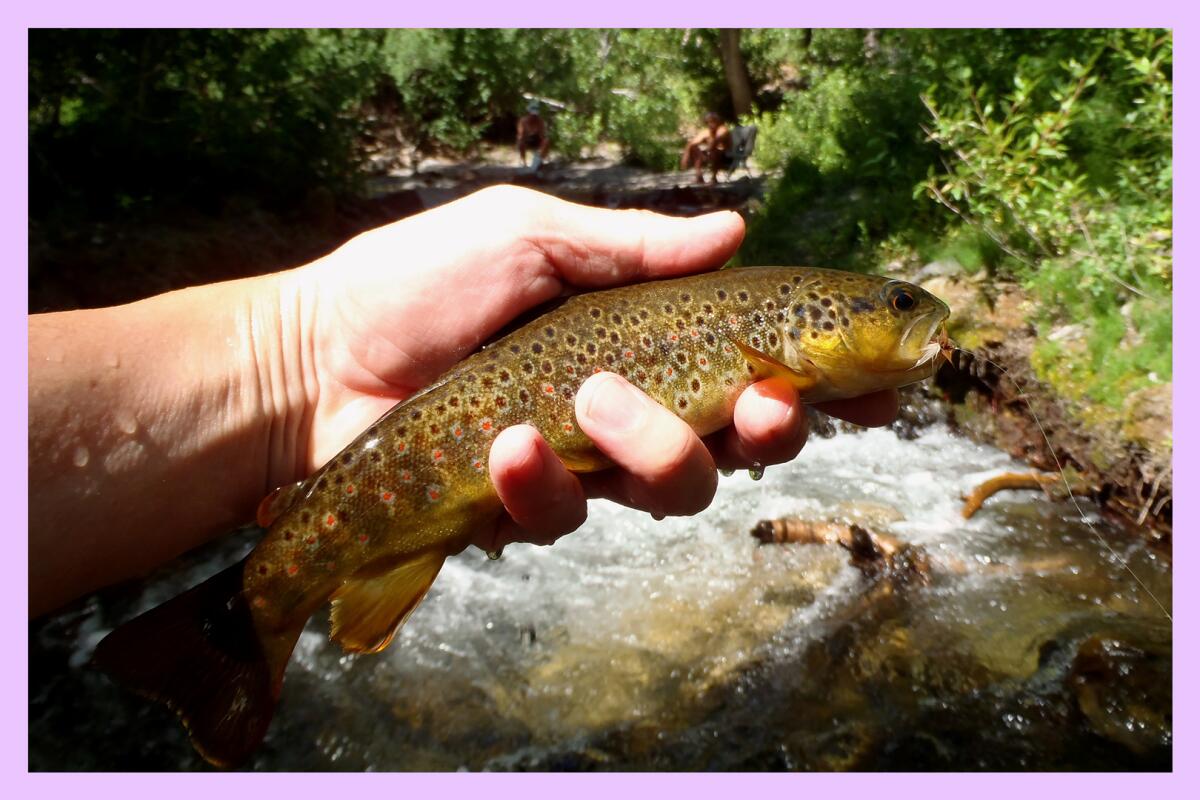
Your fly settles gently and alights on the surface. It’s two feet above the riser, a perfect presentation. The fly cocks upright, it’s in the drift and moving, “Damn you bro, you’re doing it now,” your buddy is thinking. But he’s shut up and staring as all sound drops away. Your eyes widen behind your polarized lenses. Your focus is of the eagle, or a teenager looking at a pizza menu. The fly is drifting and drifting in the feeding lane. And you’re magnificently mindless as you lean into the drift. It’s just you and the sky and the drifting fly. Then, there’s a disturbance, not in the force but in the water.
There’s a bulging disturbance in the water. A head comes up and your fly suddenly disappears in a slurping take you can actually hear. On instinct you lift and there’s a solid resistance as the hook is set and your line goes taut. ”YES!,” screams your pal as sound returns in a rush. Or, the dream is over. You are a worthless, empty sack of human skin because you struck too soon and you suck lemons and whiffed on the strike. It happens to the best of us. All kinds of things can go wrong. I broke my ankle fishing the Upper Sacramento out of Dunsmuir. Ow, that really hurt. But believe it or don’t, it was a good trip. Ask anglers who’ve been skunked, and you’ll hear, Well, the fishing sucked, I blew several takers today, but it was a great day. Never a bad day when fly-fishing. Even a bad day is a great day? Sounds like a cult. Well, it is kinda cultish. But it’s a positive cult.
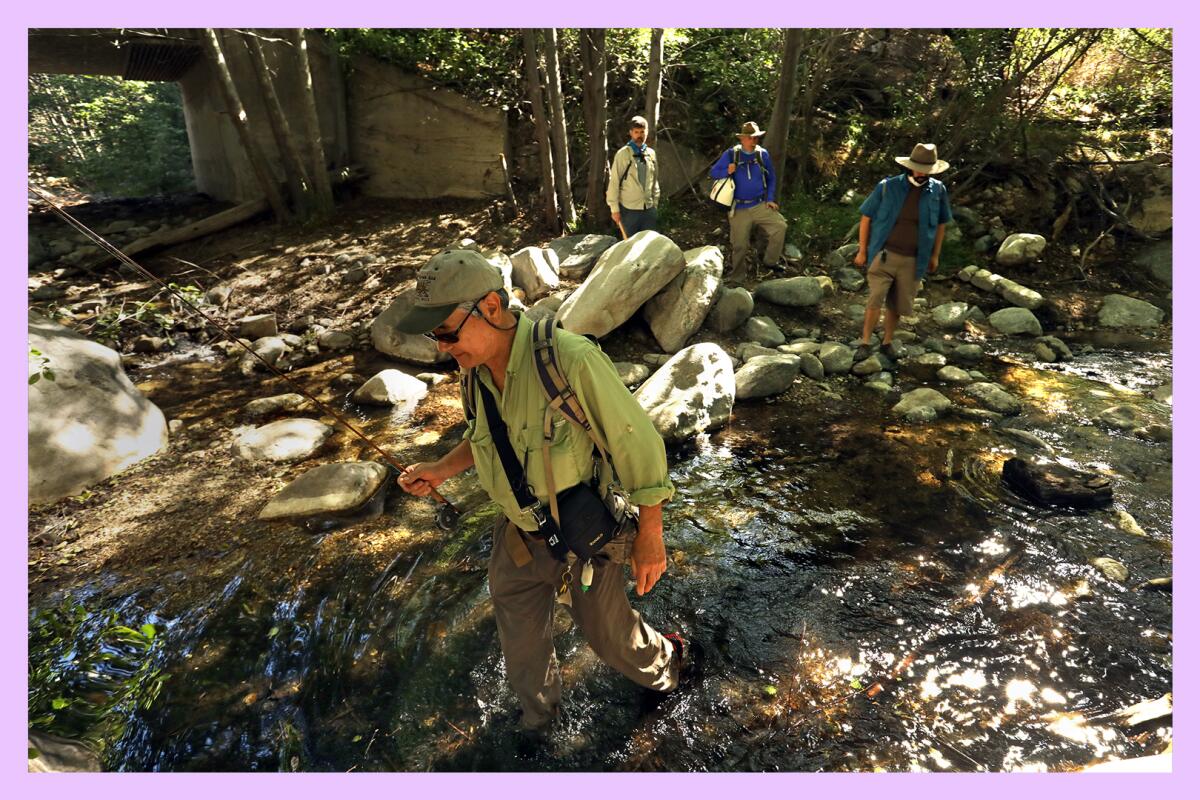
Now, I’m a Southern California sort of fly guy, and to be real there are some bummers to deal with in our local mountains. And it’s all to do with fellow humans. I am sorry but I have to state that we’ve progressed from Cro-Magnon, but some of us have refused evolution and prefer to remain Neanderthal.
Picture this, a rejuvenated stream from the numerous Pineapple Express storms we got this year. Imagine a stream that nearly went dry last fall like the Arroyo Seco above Pasadena, now flowing with the blessing of rain like the stream it should be. And with aquatic bugs returning and tiny trout surviving — but whoa, there’s trash, Flamin’ Hot Cheetos bags, Starbucks cups and the worst, discarded diapers. And tagged-up rocks and trees.
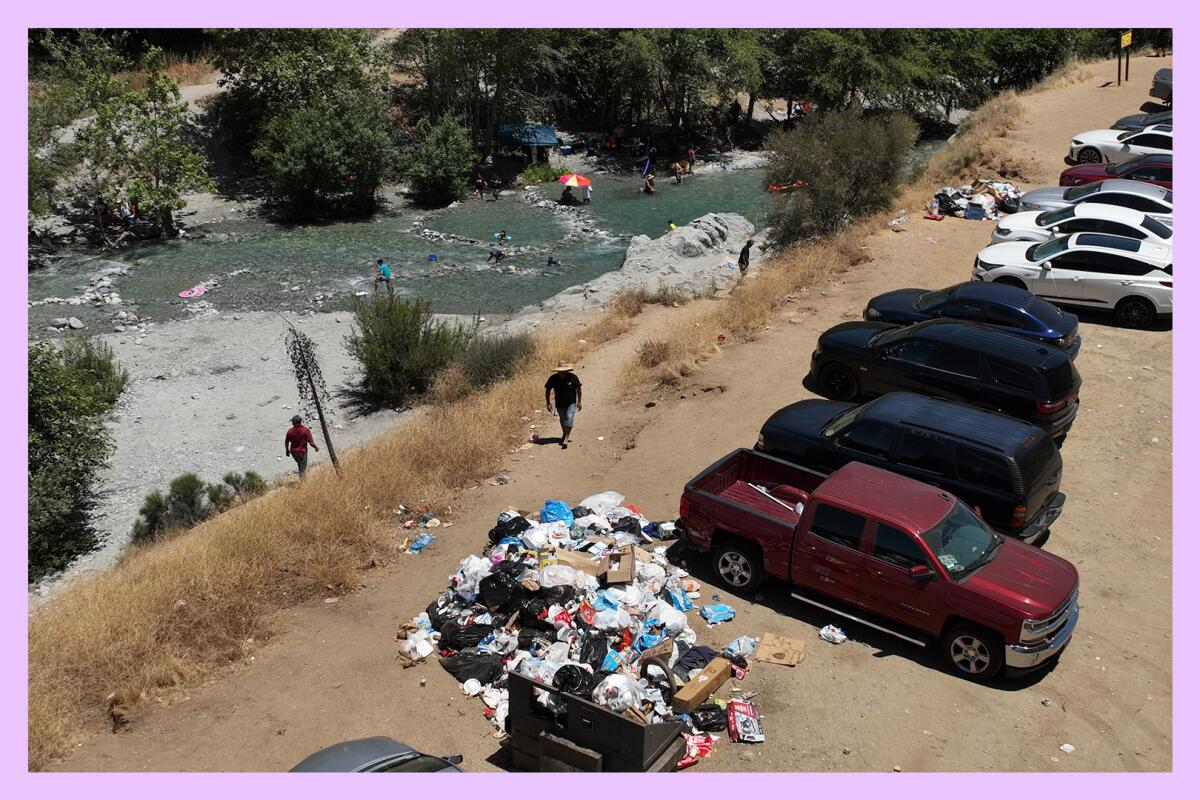
Now, fortunately, the Arroyo Seco is kept marvelously clean by volunteers but if you want to witness firsthand the horrific impact of your fellow humans, visit the Azusa Canyon. It’s really, really bad up Highway 39.
Oh, there is fly-fishing to be had in that canyon one hour from DTLA, but the degradation of the environment is so out of control The Times has written about it several times over the years, most recently back in August. I’ve personally spent hours picking up trash before I begin fishing. My record one-day haul weighed more than 150 pounds and included discarded chairs and cheap metal barbecues — I usually average about 15 pounds of trash.
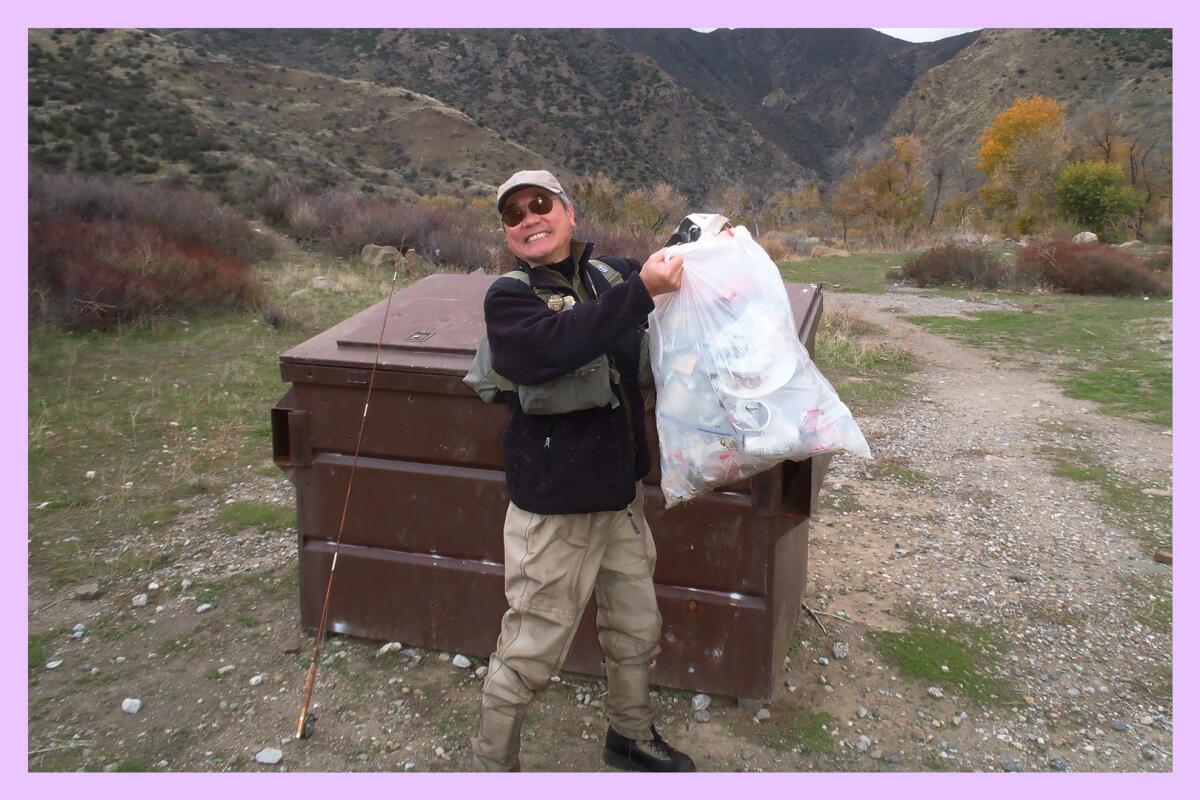
Now here’s the absolutely crazy thing, I didn’t bring a trash bag that big haul day. I used the ones I found along the East Fork of the San Gabriel river. Don’t get me started on the tagging of rocks, cliff faces and even trees. It is stupid, idiotic and as dumb as the painted rocks. A big part of the ethos of fly-fishing is protecting and preserving things. The majority of us deeply care about water and keeping it clean; we care about the fish we seek, we handle them with care and release them gently. There are river cleanups (I’m far from alone in this). You’ll find fly types doing stream and river repairs, and there are good-hearted groups and clubs that work with kids, veterans, “wounded warriors,” and breast cancer survivors (Casting for Recovery).
If you’re interested in joining the cult, the sport I mean, there are about a dozen fly-fishing clubs around Southern California, and they welcome new members. They offer casting clinics, fly-tying workshops, speakers, dinners and events. They may hold used gear sales (good stuff for cheap). Best of all, they organize trips to the ocean, rivers and sometimes to exotic destinations. There’s always someone to help you along.
You can make new friends, a rare thing in modern life I’ve heard. Quoth the late, great fishing author Harry Middleton, “Fishing is not an escape from life, but often a deeper immersion into it.”
And the new friends you meet may be far different from you. They may vote and worship differently — like my late pal George Boehme, who definitely voted differently than me. But we fished together like mad dogs and always had a great time. You and your opposite may share this beautiful sport, never arguing while immersed in the flow, just being fishing pals in the great outdoors, fooling an animal that’s dumber than you.
See you on the water, in the game.
3 things to do
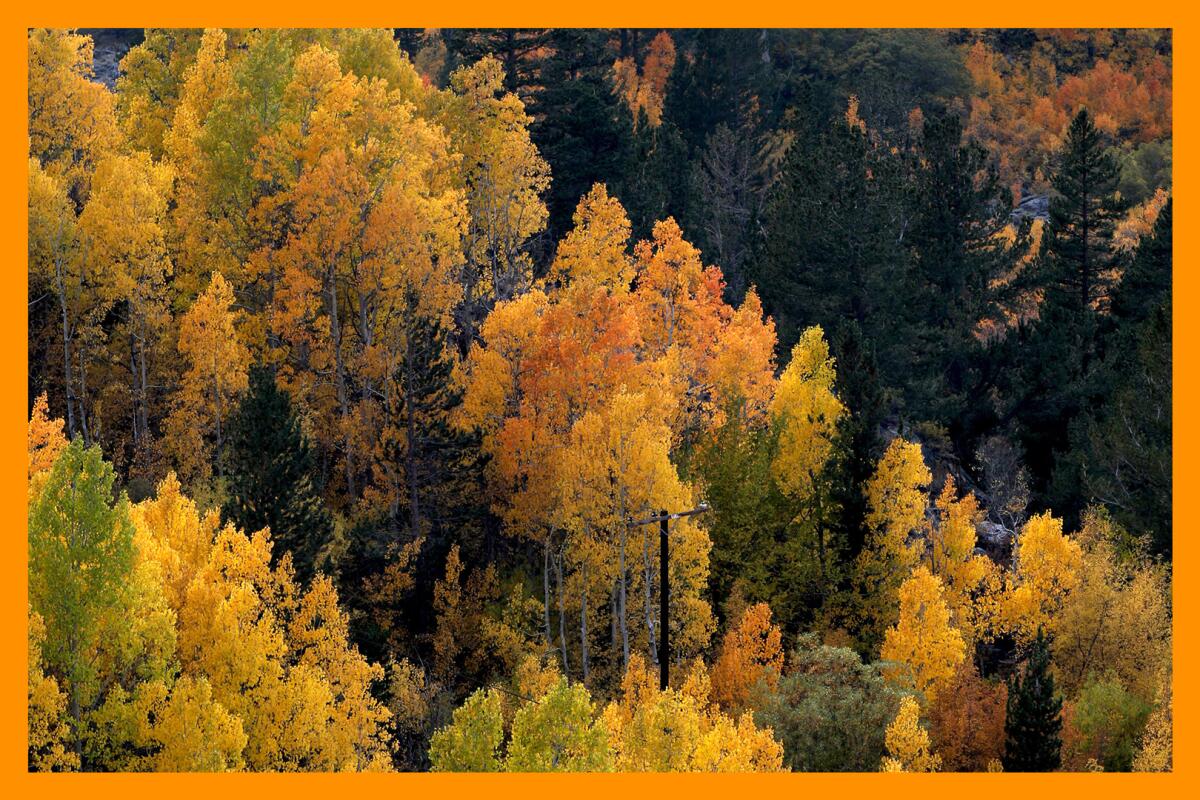
1. Peep the leaves. Autumn is in full swing and that means the leaves are changing color in the Sierras — and elsewhere around the Golden State. Keep up with the constantly changing color conditions online, then plan your drive (or hike or walk or camping trip) accordingly. The seasonal blog California Fall Colors, with a fall color map that’s updated every Friday all autumn long, is a good place to start. californiafallcolor.com
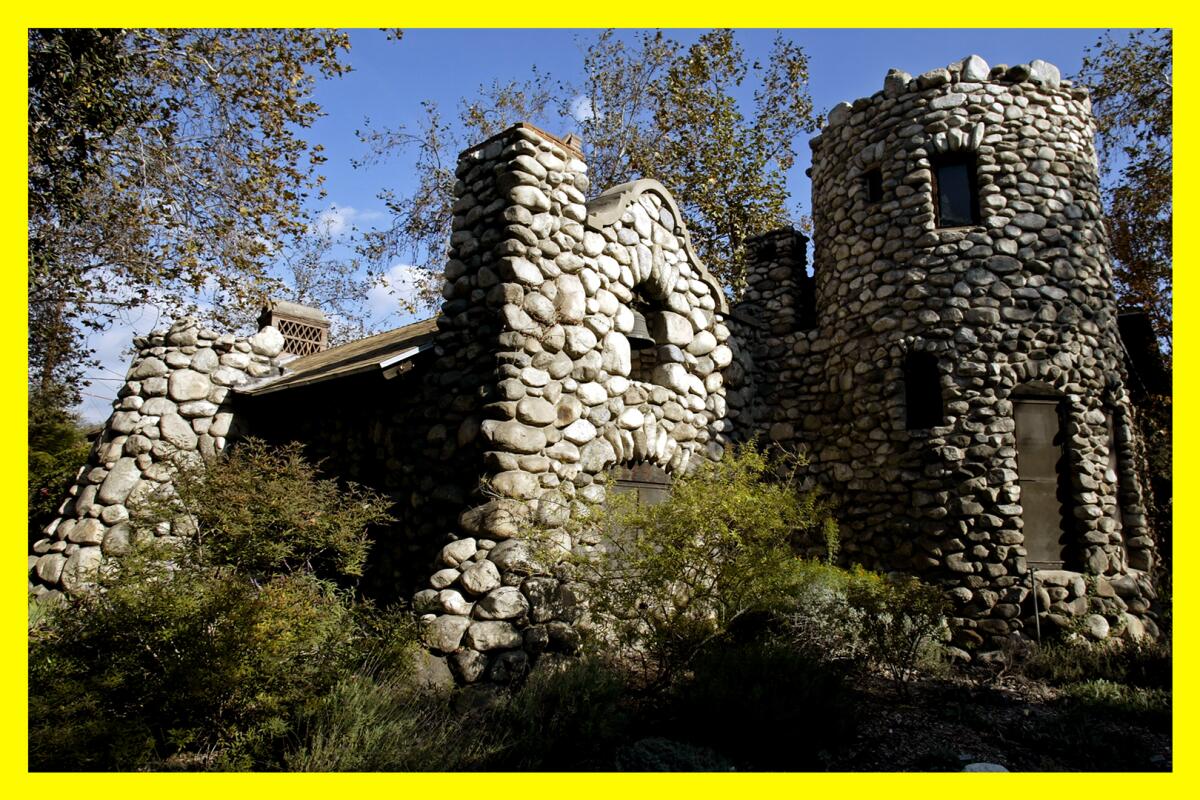
2. Leave no stone (house) unturned. Visit El Alisal, Charles Lummis’ hand-built stone home in the Arroyo Seco. Lummis was a Harvard man, Victorian adventurer, early activist on behalf of Native Americans and The Times’ first city editor. He walked to California, founded L.A.’s first public library, and hosted grand parties at his pad which you can visit for free just off the 110 North. Open Saturdays and Sundays 10 a.m. to 3 p.m. laparks.org
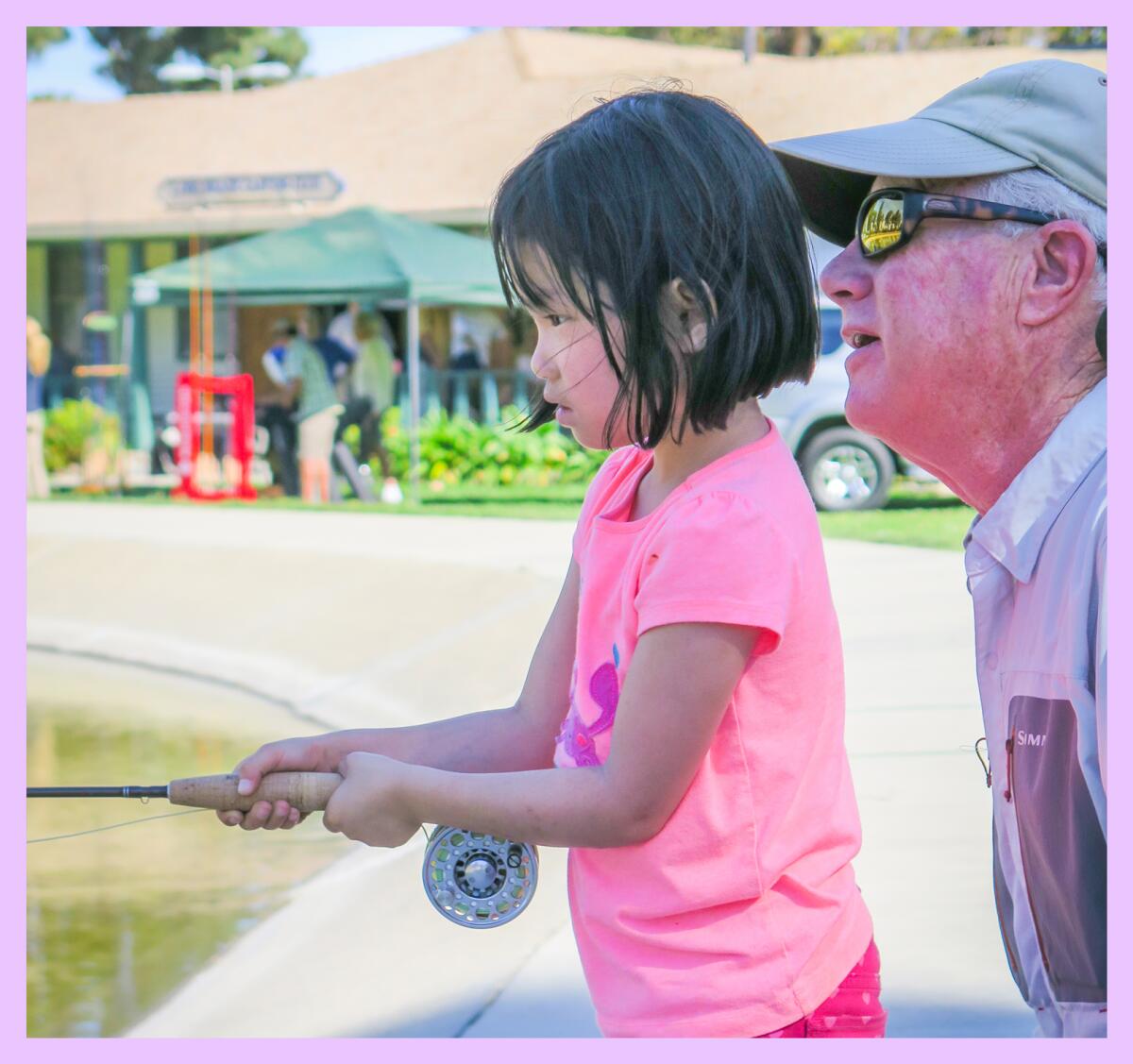
3. Make plans on the double for the Double Haul Ball. This all-day saltwater fly-fishing educational community event will include panel discussions, casting lessons, fly-tying demonstrations, vendor booths, a used equipment sale, live music and a seafood lunch. Taking place on Nov. 18 from 8 a.m. to 4 p.m. and hosted by (and held at) the historic Long Beach Casting Club, tickets are $25 (admission is free for those 16 and younger) with proceeds benefiting the Mayfly Project and Cast Hope. More information and an RSVP link can be found at longbeachcastingclub.org
The must-read

The L.A. River needs to be encased in concrete, what? That’s far from a provocative statement if you find and read a copy of former Times reporter Blake Gumprecht’s “The Los Angeles River: Its Life, Death and Possible Rebirth.”
Published in 1999, Gumbrecht’s research takes the reader back through the history of our region, what makes the L.A. Basin unusual and great for lots of building and population — but also why unpredictable, catastrophic and deadly flooding may permanently require the river to be channelized and controlled. Spoiler alert: The river may have created the vast river plain we live on today. But it can kill when big rains arrive. The recent Tropical Storm Hilary would have done just that without the extensive flood control measures put in place decades ago.
Happy adventuring,

P.S.

Tours at the Times Olympic printing plant end forever on Nov. 1. Tours are free, groups are limited to six and children must be at least 8 years old. Proof of vaccination and masks are required. Email darrell.kunitomi@latimes.com to book a tour.
For more insider tips on Southern California’s beaches, trails and parks, check out past editions of The Wild. And to view this newsletter in your browser, click here.
Sign up for The Wild
We’ll help you find the best places to hike, bike and run, as well as the perfect silent spots for meditation and yoga.
You may occasionally receive promotional content from the Los Angeles Times.



